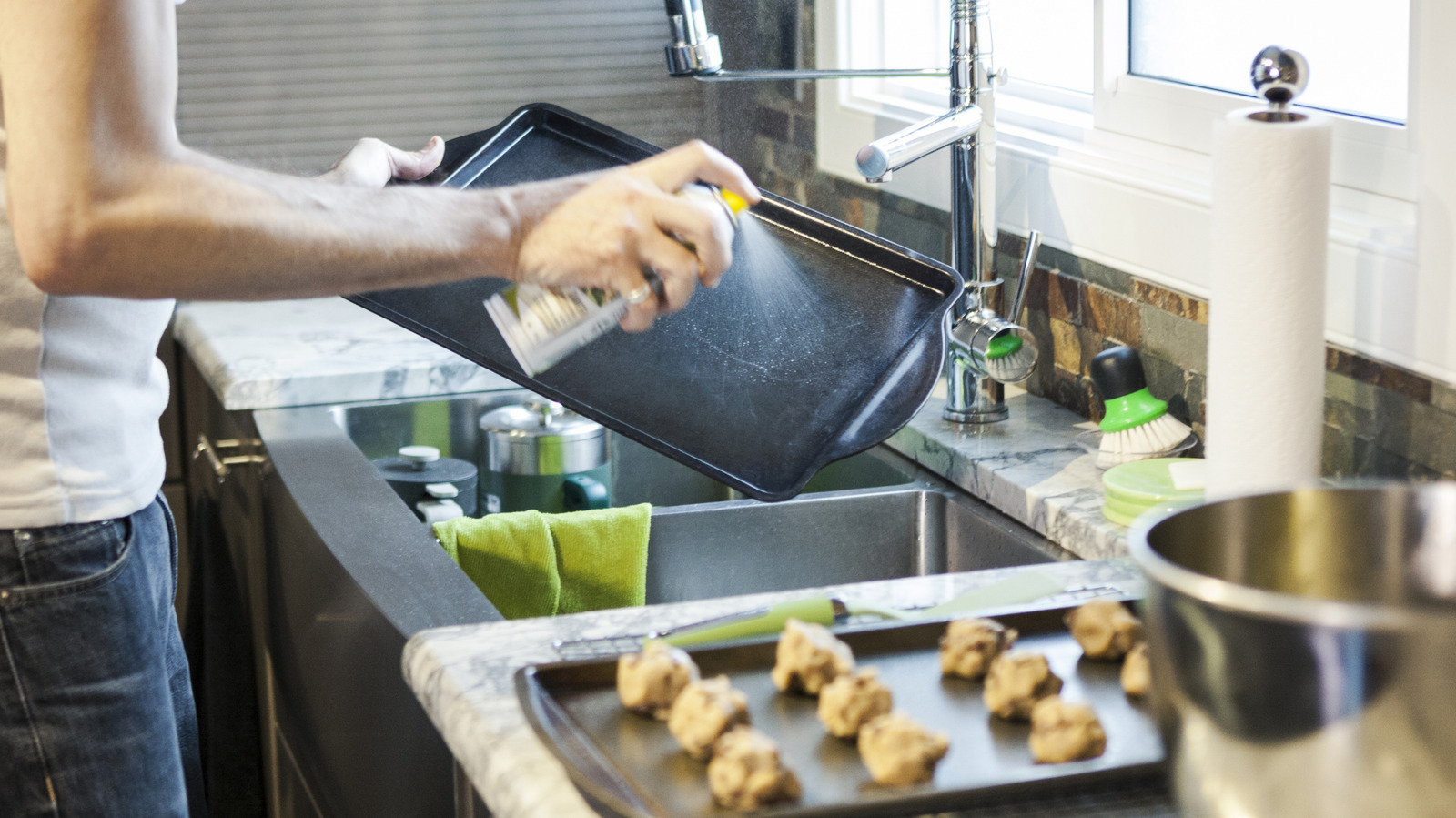Cooking sprays can be a quick and easy solution for greasing pans or adding a light mist of oil to your favorite dishes, but when you break it down, they are actually more expensive by volume compared to traditional bottles of oil, given the small amount you get. So while they may look cheap on the shelf, most store-bought sprays don’t last long, and when you consider how much you’re paying for just a few ounces of oil, the cost can add up. Luckily, it’s surprisingly easy to make DIY cooking spray to save yourself money in the long run.
By mixing your preferred oil, liquid lecithin, and water, you can create your own high-quality cooking spray that works just as well as store-bought varieties. Although adding water might sound strange, it’s essential for thinning the oil so that it dispenses in a fine mist rather than a heavy stream. Lecithin is a natural emulsifier that binds the water and oil together and prevents the two from separating. Without it, your spray would quickly break down into layers, making it harder to disperse a uniform mist.
To get that smooth, even spray, you’ll need a bottle with a pump or air-pressure system like the affordable Misto sprayer, which achieves the same kind of mist you’d get from store-bought aerosol sprays. Of course, there are other, less complicated ways to make DIY cooking sprays. If you’re not concerned about achieving a fine mist, you can simply transfer your favorite oil to a standard spray bottle for a less exact dupe.
Tips for making DIY cooking spray
Choosing the right bottle is key to making a successful homemade cooking spray with a long shelf life. To protect your oil from sunlight oxidation, opt for a dark-colored or light-blocking bottle. Similarly, because oils can draw fat-soluble chemicals out of plastic, use a glass or aluminum bottle when possible. To maximize its lifespan, store an olive oil-based spray in the refrigerator for longer freshness.
Next, consider your options for emulsifiers. Although it’s not strictly required, liquid lecithin goes a long way in perfecting a cooking spray dupe. Soy and sunflower lecithin are the most common types available, but because it’s thinner and blends more easily with oil and water, soy lecithin is a popular choice. Sunflower lecithin, on the other hand, is more viscous, which can make it harder to mix and may lead to clogging over time. However, if you’re avoiding soy as an allergen or concerned about possible chemical extraction processes, you might opt for sunflower lecithin instead.
When combining ingredients, ratios matter. A good rule of thumb is one part oil to five parts water and no more than half a teaspoon of liquid lecithin. Once combined, shake it up, and use it to grease your favorite pots and pans. With this life-changing kitchen hack, you’ll save yourself money you may not have realized you were even losing.





